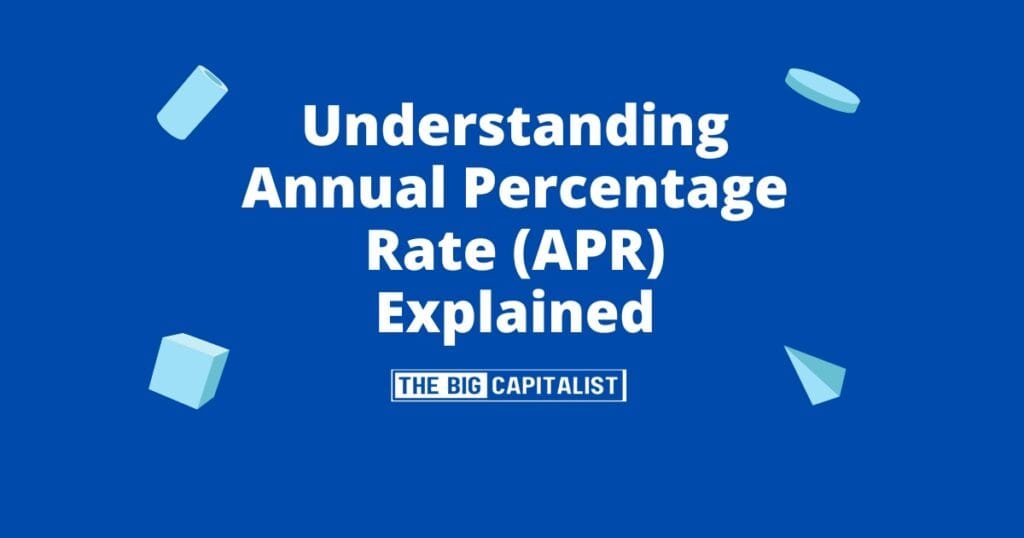Navigating the world of finance can be complex. One term that often surfaces is the Annual Percentage Rate (APR).
Simply put, APR is a measure of the cost of borrowing. It includes interest and other charges, giving you a complete picture of the loan cost..
The Annual Percentage Rate, commonly known as APR, is a financial term many encounter yet few fully understand. It represents the annual cost of borrowing funds.
APR encompasses both interest rates and additional fees. This comprehensive measure helps borrowers see the true expense of a loan. Instead of focusing just on the interest, APR shows what you will actually pay annually.
Understanding the APR meaning is vital for sound financial decisions. It allows you to compare different loans or credit products with ease. When different terms and conditions cloud your financial options, APR acts as a clear indicator.
Here are some reasons why APR is important in financial decisions:
- APR provides a complete cost picture.
- It helps compare various loans on equal footing.
- APR awareness can prevent costly financial mistakes.
Knowledge of APR helps you manage financial goals better. Whether choosing a credit card or taking out a loan, knowing the APR ensures that you won’t be caught off guard by hidden costs. Always keep an eye on APR, and it will guide you through the borrowing process with clarity and assurance.
How APR is Calculated
Understanding how the Annual Percentage Rate (APR) is calculated can demystify borrowing costs. APR is more than just interest; it includes various components. These can cover broker fees, closing costs, and other charges.
To get the full picture, lenders add these extra fees to the interest rate. The total is then annualized to reflect a yearly rate.
Consider a loan with a 5% interest rate and additional fees amounting to 2%. The resulting APR would be approximately 7%. This example shows how APR can exceed the interest rate.
There are also two main types of APR: fixed and variable. Fixed APR remains constant over the loan term. It’s predictable, so borrowers can budget without surprises.
Variable APR, on the other hand, fluctuates based on market conditions. It can rise or fall, affecting monthly payments. Changes in market conditions can make variable APR unpredictable.
When comparing loan products, always examine these components and consider what might impact future costs. Here are some core components often included in APR:
- Interest rate
- Loan origination fees
- Broker fees
- Additional service fees
Being informed about how APR is calculated can empower you as a consumer. Knowing the difference between fixed and variable rates can impact your choice of financial products. Choose wisely, as the right decision can lead to significant savings.
APR vs. Interest Rate: Understanding the Difference
Many people confuse annual percentage rate (APR) with the simple interest rate. While they seem similar, they serve different purposes. The interest rate is the basic cost of borrowing money. It doesn’t include any extra fees or costs associated with the loan.
APR, however, offers a more comprehensive picture. It incorporates both the interest rate and additional fees. This makes APR a crucial tool for gauging the true cost of borrowing.
Imagine a loan with a 4% simple interest rate. If there are extra costs like closing fees, the APR might rise to 6%. This difference is vital in understanding potential financial commitments.
When you compare loans, using APR is usually more effective. It considers all costs, providing a clearer snapshot. Focusing solely on the interest rate might obscure hidden fees.
Such discrepancies also influence monthly payments and long-term financial planning. A loan with a lower interest rate but higher APR may end up costing more over time. Understanding these differences can save you money and protect your financial health. Always aim to evaluate the APR for a complete understanding of loan costs.
Types of APR and Their Implications
Several types of annual percentage rates (APR) exist, each with unique implications. Understanding these can help you make better financial decisions.
1. Fixed APR:
A fixed APR remains unchanged during the loan or credit period. It provides stability and predictability for budgeting. While it offers security, it might be higher compared to initial variable rates.
2. Variable APR:
In contrast, a variable APR can fluctuate based on an index rate. This can be beneficial if the rate decreases, reducing costs. However, it can increase, making future payments unpredictable.
3. Introductory APR:
Credit cards often advertise an introductory APR as a promotion. It typically offers a lower rate for a limited time. This can be enticing, but it’s crucial to check the rate after the promotion ends.
4. Balance Transfer APR:
This type of APR applies when you transfer debts from one card to another. It may offer low rates to attract new customers, but watch out for transfer fees. Understanding these fees ensures you calculate the true savings.
5. Cash Advance APR:
Cash advances often come with their own APR, usually higher than purchase APRs. Interest starts accruing immediately, making it an expensive option for borrowing cash.
6. Penalty APR:
The penalty APR kicks in when you make late payments or violate terms. It can significantly increase the cost of borrowing. Understanding terms and conditions helps avoid this costly surprise.
Each APR type affects overall borrowing costs differently. Recognizing their implications aids in smarter financial planning. When choosing credit products, consider these APR types. Evaluate which suits your needs for cost efficiency and risk management. Balancing between costs and benefits is key to maximizing financial opportunities.
The Role of APR in Various Financial Products
APR plays a crucial role across a variety of financial products. Each product leverages APR uniquely, impacting borrowers differently.
Credit Cards:
APR influences the cost of carrying a balance on credit cards. While some cards offer low introductory APRs, standard rates apply once the promotional period ends. It’s vital to understand both purchase and cash advance APRs on credit cards to avoid unexpected costs.
Mortgage Loans:
With mortgages, APR reflects the total cost of borrowing over the loan term, including fees and interest. A lower APR suggests a cheaper loan in the long run. Comparing APRs from different lenders can save significant money when choosing a mortgage.
Auto Loans:
In auto financing, APR determines the total cost of the loan. It’s affected by the loan term length and borrower’s credit score. A lower APR reduces monthly payments and overall interest, making vehicles more affordable over time.
Student Loans:
APR is an essential factor for students considering loans for education. It encompasses interest rates and other charges, affecting the overall cost of education finance. Federal student loans often offer favorable APR terms compared to private lenders.
Key Points to Remember:
- Credit cards: APR affects ongoing balance costs.
- Mortgage loans: APR indicates total borrowing costs.
- Auto loans: APR influences vehicle affordability.
- Student loans: APR affects education financing.
Understanding APR’s role in these products aids in making informed decisions. Always examine APR details before committing to any financial obligation. Making educated choices can lead to better financial health and manageable debt.
How to Compare and Negotiate APRs
When choosing financial products, it’s crucial to compare APRs across the board. Different lenders may offer varying APRs for similar products. Pay attention to the total borrowing cost, not just the headline interest rate. A slight difference in APR can lead to substantial savings.
Comparing APRs means looking beyond the surface numbers. Consider factors like fees, loan terms, and interest structures. Use online calculators to estimate the true cost of borrowing over time. This approach helps in identifying the most cost-effective option.
Negotiating a lower APR is another powerful tool for borrowers. Start by maintaining a healthy credit score, as it greatly influences the APR you receive. Don’t hesitate to reach out to lenders with competitive offers to ask for a better deal. Persuade them by highlighting your creditworthiness and financial history.
Remember, persistence can pay off. While some lenders may stick to their rates, others might be open to negotiation. Take advantage of this opportunity to reduce your borrowing costs and make smarter financial decisions.
Legal Aspects and Consumer Protection
Understanding the legal requirements surrounding APR is essential for any borrower. Lenders are required to disclose the APR to borrowers as part of the transparency process. This ensures you are aware of the actual cost of borrowing and can make informed decisions.
The Truth in Lending Act (TILA) plays a vital role in ensuring fairness. TILA mandates full disclosure of credit terms, including APR, to protect consumers. Knowing your rights under TILA can prevent you from falling into high-cost borrowing traps.
Consumer protection agencies work diligently to uphold these laws. They strive to keep lending practices transparent and fair. Staying informed about these regulations empowers you to recognize predatory lending practices and avoid them.
Tips for Minimizing APR Costs
Reducing APR can significantly lower borrowing costs. One effective strategy is to improve your credit score. A higher credit score often leads to more favorable APRs, as lenders perceive you as a lower risk.
Regularly reviewing your credit report for errors can also help. Disputing inaccuracies can result in a better credit score. Being proactive about your credit health can save you money on interest.
Additionally, consider negotiating with your lender for a better APR. If you have a good payment history, you might secure a lower rate. Showing commitment to your financial obligations can open doors to reduced costs.
Conclusion: The Significance of APR in Financial Literacy
Understanding APR is crucial in making informed financial decisions. It reveals the true cost of credit, influencing loans and credit card choices. By comprehending APR, you can compare various financial products more effectively.
Responsible borrowing begins with knowledge. Recognizing the difference between APR and interest rates helps in managing monthly payments and total debt. Being aware of the types of APR further aids in minimizing unnecessary costs.
Ultimately, a deep comprehension of APR enhances financial literacy. This empowers you to make confident choices about borrowing, ultimately leading to a more secure financial future.
FAQ: Annual Percentage Rate (APR)
Q: What does APR include?
A: APR includes the interest rate plus additional fees and charges, representing the total annual cost of borrowing.
Q: How does APR differ from the interest rate?
A: The interest rate covers only the cost of borrowing money, while APR adds loan origination fees, service charges, and other costs for a complete picture.
Q: Why is comparing APRs important?
A: Comparing APRs ensures you evaluate the true cost of loans or credit cards, helping you choose the most cost-effective option.
Q: How can I lower my APR?
A: Improve your credit score, dispute errors on your credit report, and negotiate with lenders using competing offers to secure a lower APR.
















